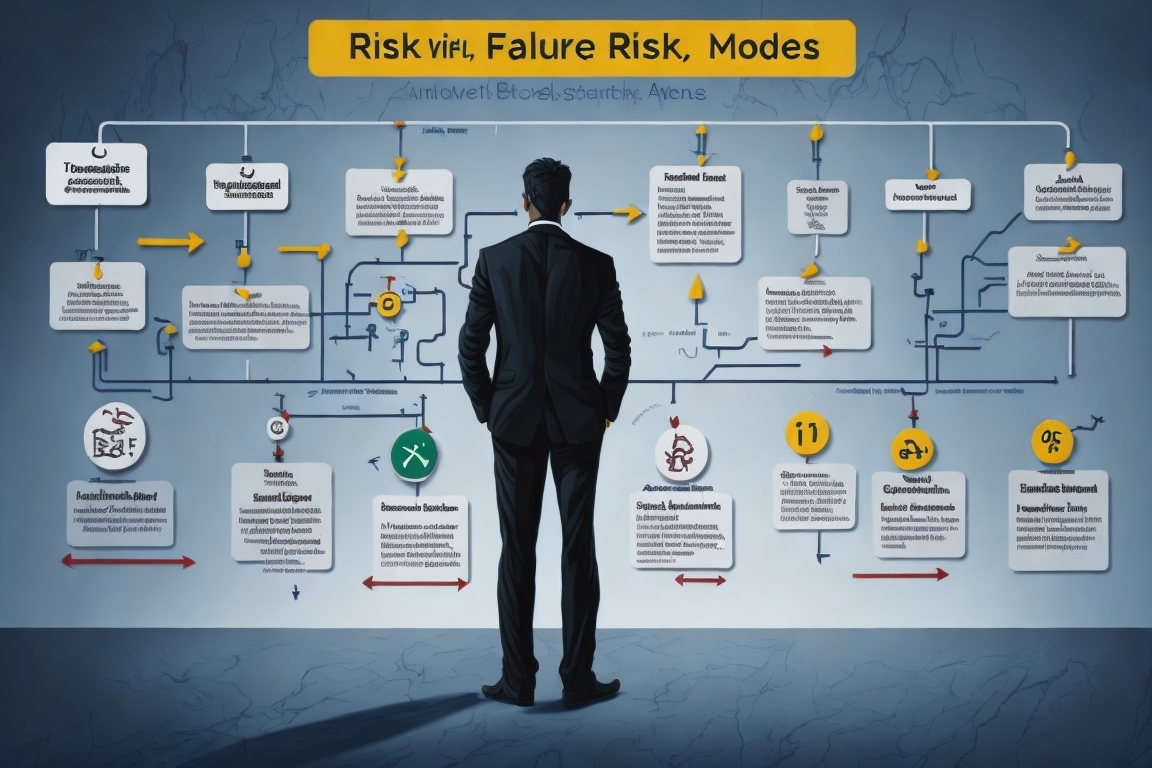
This article is intended as an experiment. It took me < 5 minutes from start to finish for AI to write this article for modla.co. It has not been fact checked or changed from the original output, but I throught I'd leave hit here for everyone to see how far AI has come. While I don't agree with all of the below, it is how many businesses are creating content and this was an interesting excercise.
We often talk about understanding the risk and reliability in the context of asset and process management. But what really sets FMECA (Failure Modes, Effects, and Criticality Analysis) apart? Simply put, it's a proactive tool designed to identify potential failure points before they escalate into costly downtime or safety hazards.

FMECA serves as the cornerstone of a robust risk management strategy. By systematically evaluating the severity and likelihood of potential failures, we can prioritize mitigation efforts to enhance safety and reliability. It's not just about predicting what can go wrong; it's about being prepared to address it effectively.
Key Takeaways & Why it Matters
Proactive Planning - Anticipate issues before they occur.
Safety Enhancement - Protect workers and the environment.
Cost Savings - Minimize expensive repair and downtime.
Quality Control - Maintain high standards consistently.
Asset Optimization - Extend the lifespan of equipment.
By embracing FMECA, you're not just ticking a box for compliance---we're paving the way for a more resilient operation. Recognizing the value of FMECA in asset management isn't just good practice; it's a strategic move towards operational excellence.
When we delve into FMECA, we're talking about identifying several key components:
It's a trifecta of analysis that, when executed well, culminates in a well-oiled machine of preventive measures. But it's not enough to just know these components; we must understand how they interlock and impact our overall risk management.
We can't underscore enough the importance of a methodical approach to FMECA. Here's a simplified process:
Remember, the goal is to illuminate risks and prioritize accordingly. This is a continuous process of improvement, where learning from each step feeds back into the system for even better results.
Diving into FMECA requires a disciplined approach. Following a structured process ensures that no aspect of potential failure is overlooked. It's about coupling expertise with meticulous investigation to yield insightful and actionable outcomes.
The proper execution of FMECA can mean the difference between pre-emptive adjustment and unexpected failure.
Implementing FMECA isn't just a precautionary measure---it's a strategic advantage that can set your organization apart. Here's why:
"FMECA is like a flashlight in the dark, illuminating the path to safer, more reliable processes," is a sentiment echoed throughout industries that recognize the imperative of proactivity.
When we compare FMECA to traditional risk management methods, the differences can be stark. While many approaches offer a reliable framework for assessing risk, FMECA dives deeper, providing a comprehensive and quantifiable assessment. It's not merely about flagging potential issues; it's about understanding their impact and frequency, and how to intervene.
Using FMECA doesn't just address risks---it contextualizes them within your operation's unique landscape.
Like any complex process, implementing FMECA comes with its share of hurdles. Some of the most common challenges we might face include:
Acknowledging and addressing these challenges is paramount to the successful application of FMECA. It's about building the right foundation and fostering a culture that embraces thorough risk assessment.
It's always inspiring to see FMECA in action. From aerospace to healthcare, numerous sectors have reaped the rewards of diligent application. For instance, analysing medical equipment for failure modes has drastically improved patient safety and care effectiveness.
Consider the story of an energy company that leveraged FMECA to revamp their maintenance schedule, leading to a significant reduction in downtime and a boost in operational efficiency.
As we look ahead, the future of FMECA is as bright as ever, but not in its current format. While understanding the failure modes, effects, and criticality (or consequences), remain mandatory for great asset analytics, these "building blocks" are more frequently being captured in modular frameworks such as Knowledge First Architectures. The reason being is that while the original intent of FMECA, was to assist in setting appropriate maintenance tasks and corrective actions to minimise the effects, more and more use cases for this information are emerging. In order to leverage the FMECA elements for other use cases in an automated way, we need to look to Asset Modelling. With Asset Modelling, we're witnessing an exciting convergence of technology and methodology that promises even more comprehensive and user-friendly applications of FMECA.
"In a world increasingly driven by data and analytics, the role of FMECA will only become more vital," is a foresight we share as industry experts, but only if it uses scalable frameworks to leverage the captured understanding. With advances in AI and machine learning, we're on the precipice of a new era of predictive maintenance and risk management, all underpinned by FMECA principles.
Before we wrap up, we have some frequently asked questions compiled for you, addressing some common curiosities about FMECA.
Q: Can FMECA be applied to any industry? A: Absolutely! While it originated in aerospace and defence, FMECA has wide-ranging applications across all sectors that value reliability and risk management.
Q: How often should FMECA be conducted? A: Ideally, FMECA is an ongoing process, re-evaluated with significant changes to the system or process, or periodically to reflect operational updates.
Conclusion: Embracing FMECA for a Resilient Tomorrow
As we close this comprehensive guide, we're reminded of the transformative power of FMECA. It's not just about anticipating what could go wrong --- it's about fostering a culture that's always a step ahead, with risk management deeply embedded in every process.
Take that first step if you haven't already and bring the myriad benefits of FMECA to your organization. With a combination of expertise, technology, and resolve, we can all look forward to a future where reliability and safety are the cornerstones of industry.